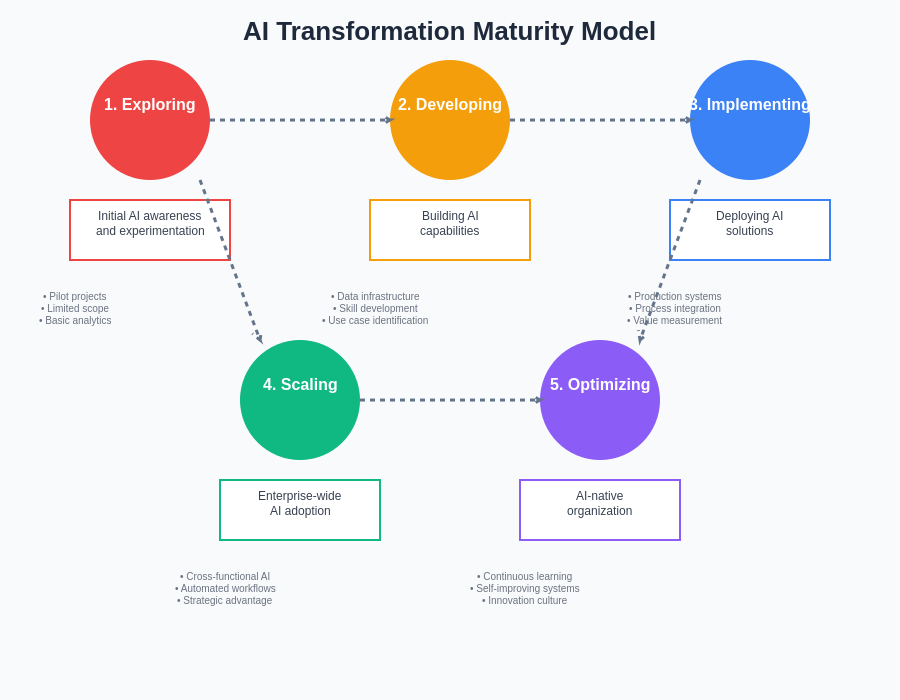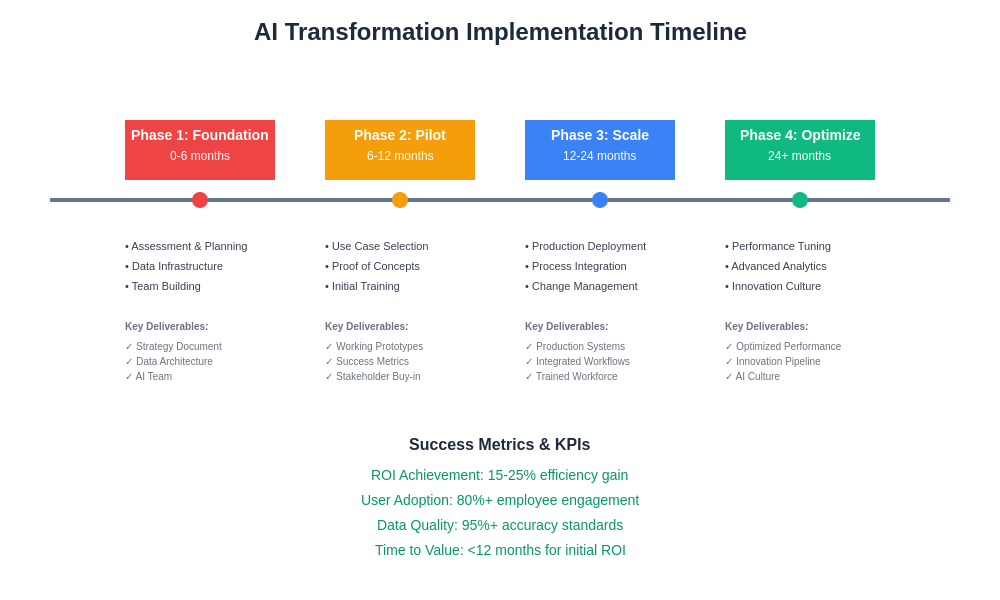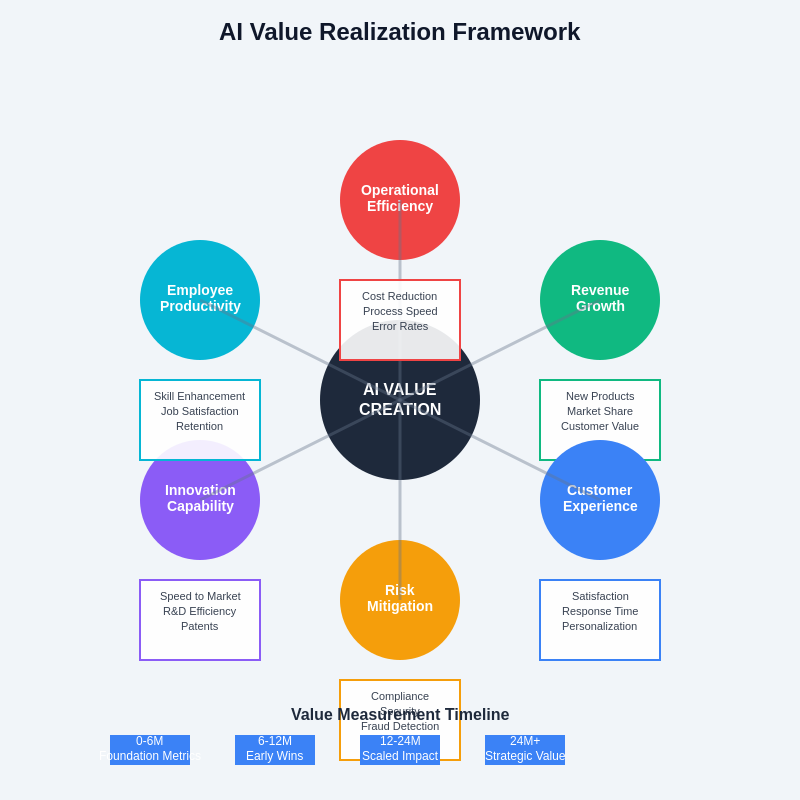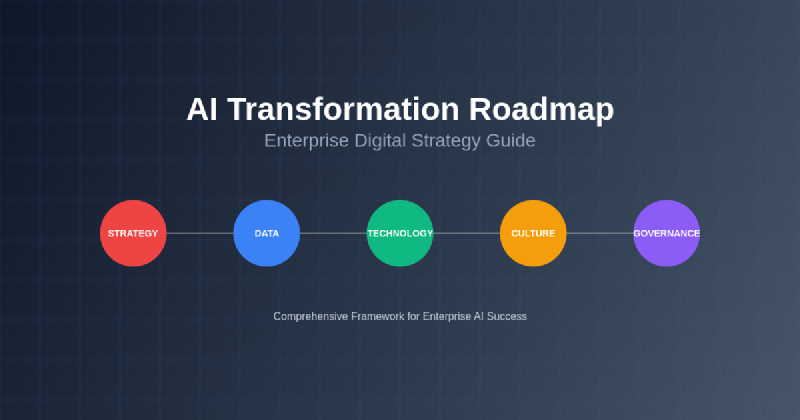The enterprise landscape is experiencing an unprecedented transformation as artificial intelligence emerges from experimental laboratories into mission-critical business operations. Organizations worldwide are recognizing that AI adoption is no longer a competitive advantage but a fundamental requirement for survival in the digital economy. This comprehensive transformation requires a strategic approach that encompasses technological infrastructure, organizational culture, and operational processes to create sustainable value and competitive positioning in an increasingly AI-driven marketplace.
Explore the latest AI trends and developments that are shaping enterprise transformation strategies across industries. The journey toward AI maturity demands careful planning, substantial investment, and unwavering commitment to change management principles that ensure successful adoption and integration of artificial intelligence technologies throughout the organization.
Understanding the Strategic Imperative
Enterprise AI transformation represents far more than the simple adoption of new technologies; it embodies a fundamental reimagining of how organizations operate, compete, and create value in the modern economy. The strategic imperative for AI transformation stems from multiple converging factors including increasing customer expectations, operational efficiency demands, competitive pressures, and the exponential growth of available data that can be leveraged for intelligent decision-making and automated processes.
Organizations that successfully navigate AI transformation typically demonstrate superior performance across key business metrics including revenue growth, operational efficiency, customer satisfaction, and market responsiveness. The transformation process enables enterprises to harness the power of predictive analytics, automate routine operations, enhance decision-making capabilities, and create new revenue streams through AI-enabled products and services. This comprehensive approach to AI integration requires strategic vision, substantial resource allocation, and organizational commitment to long-term transformation objectives.
The complexity of enterprise AI transformation necessitates a structured approach that addresses technological, organizational, and cultural dimensions simultaneously. Organizations must develop comprehensive strategies that account for existing infrastructure constraints, workforce capabilities, regulatory requirements, and market dynamics while maintaining focus on sustainable value creation and measurable business outcomes.

Enterprise AI maturity evolves through distinct stages, each characterized by specific capabilities, challenges, and value realization opportunities. Understanding this progression enables organizations to assess their current position, identify next steps, and develop realistic transformation timelines that align with their strategic objectives and resource constraints.
Establishing the Foundation for AI Readiness
The foundation of successful AI transformation rests upon robust data infrastructure, organizational readiness, and strategic alignment between business objectives and technological capabilities. Enterprises must first conduct comprehensive assessments of their current state including data quality, system integration capabilities, workforce skills, and cultural readiness for change. This foundational analysis provides the critical insights necessary for developing realistic transformation timelines, resource requirements, and success metrics that guide the entire transformation journey.
Data readiness represents perhaps the most critical component of AI transformation preparation, as artificial intelligence systems require high-quality, accessible, and well-organized data to deliver meaningful business value. Organizations must invest in data governance frameworks, infrastructure modernization, and integration capabilities that enable seamless data flow across enterprise systems. The establishment of data lakes, implementation of master data management systems, and creation of real-time data pipelines form the technological backbone that supports advanced AI applications and analytics capabilities.
Enhance your AI capabilities with Claude to support strategic planning and implementation of enterprise transformation initiatives. The integration of advanced AI assistants into planning processes enables organizations to accelerate decision-making, improve strategic analysis, and enhance the quality of transformation roadmaps through intelligent insights and recommendations.
Organizational readiness encompasses leadership commitment, change management capabilities, and workforce preparation for AI-driven operations. Successful transformation requires executive sponsorship, clear communication of transformation objectives, and comprehensive training programs that prepare employees for new roles and responsibilities in an AI-enhanced work environment. The development of AI literacy across the organization ensures that employees can effectively collaborate with AI systems and leverage new capabilities to enhance their productivity and decision-making effectiveness.
Developing Comprehensive Transformation Strategy
The development of a comprehensive AI transformation strategy requires systematic analysis of business objectives, competitive landscape, technological possibilities, and organizational constraints to create actionable roadmaps that deliver measurable value. Strategic planning must balance ambitious transformation goals with realistic implementation timelines, resource availability, and risk tolerance while ensuring alignment with broader business strategy and market positioning objectives.
Effective transformation strategies typically adopt phased implementation approaches that enable organizations to build capabilities progressively, learn from early experiences, and adjust approaches based on emerging insights and changing market conditions. The phased approach reduces implementation risks, enables continuous learning and adaptation, and provides opportunities to demonstrate value and build organizational confidence in AI transformation initiatives.
Strategic prioritization frameworks help organizations identify high-impact use cases that can deliver early wins while building foundations for more complex AI applications. These frameworks typically consider factors such as business impact potential, implementation complexity, resource requirements, and strategic alignment to create prioritized portfolios of AI initiatives that maximize value creation and minimize transformation risks.
Technology Infrastructure and Architecture Design
The design and implementation of appropriate technology infrastructure represents a critical success factor for enterprise AI transformation, requiring careful consideration of scalability, security, integration, and performance requirements that support current needs while providing flexibility for future expansion. Modern AI infrastructure must accommodate diverse workloads including machine learning model training, real-time inference, data processing, and analytics while maintaining high availability, security, and performance standards.
Cloud-based architectures have emerged as preferred solutions for enterprise AI implementations due to their scalability, flexibility, and access to advanced AI services and platforms. Leading cloud providers offer comprehensive AI platforms that include machine learning frameworks, pre-trained models, data processing services, and development tools that accelerate AI implementation while reducing infrastructure complexity and management overhead.
The selection of appropriate AI platforms, frameworks, and tools requires careful evaluation of factors including performance characteristics, integration capabilities, vendor support, security features, and total cost of ownership. Organizations must balance the benefits of cutting-edge AI technologies with practical considerations such as maintenance requirements, skill availability, and long-term sustainability to ensure that technology investments deliver sustained value over extended periods.
Organizational Change Management and Culture Transformation
Successful AI transformation requires comprehensive organizational change management that addresses cultural resistance, skills gaps, role redefinition, and communication challenges that typically emerge during major technology implementations. The human dimension of AI transformation often represents the most challenging aspect of the journey, requiring sustained attention to employee concerns, training needs, and organizational culture evolution.
Culture transformation must address common fears and misconceptions about AI while building enthusiasm for new possibilities and opportunities that emerge from AI-enhanced operations. Effective change management programs include comprehensive communication strategies, hands-on training experiences, success story sharing, and recognition programs that celebrate early adopters and transformation champions who drive organizational change.
Leverage Perplexity for comprehensive research on industry best practices and transformation methodologies that can inform change management strategies and accelerate organizational learning. The integration of advanced research capabilities enables organizations to learn from successful transformations in other industries and adapt proven methodologies to their specific contexts and requirements.
The redefinition of roles and responsibilities represents a critical component of organizational transformation as AI systems assume responsibility for routine tasks while human workers focus on higher-value activities that require creativity, judgment, and interpersonal skills. Organizations must develop clear frameworks for human-AI collaboration that maximize the strengths of both human intelligence and artificial intelligence while ensuring that employees understand their evolving roles and responsibilities.
Implementation Methodology and Project Management
The implementation of enterprise AI transformation requires sophisticated project management methodologies that can handle the complexity, uncertainty, and interdependencies inherent in large-scale technology and organizational change initiatives. Agile methodologies have proven particularly effective for AI implementations due to their emphasis on iterative development, continuous feedback, and adaptive planning that accommodates the experimental nature of AI development and deployment.

A structured implementation timeline provides clear milestones, deliverables, and success metrics that guide transformation efforts while maintaining organizational focus on strategic objectives. This phased approach enables progressive capability building, risk mitigation, and continuous value demonstration throughout the transformation journey.
Effective implementation methodologies incorporate risk management frameworks that identify potential challenges, develop mitigation strategies, and establish monitoring mechanisms that enable early detection and resolution of implementation issues. Risk management must address technical challenges, organizational resistance, regulatory compliance, and market dynamics that could impact transformation success and timeline adherence.
Project governance structures must balance the need for executive oversight and strategic alignment with operational flexibility and autonomous decision-making that enables rapid response to emerging opportunities and challenges. Governance frameworks typically include steering committees, technical advisory groups, and project management offices that coordinate activities across multiple workstreams while maintaining focus on strategic objectives and value delivery.
Data Strategy and Governance Framework
Enterprise AI transformation requires comprehensive data strategy and governance frameworks that ensure data quality, accessibility, security, and compliance while enabling innovative AI applications and analytics capabilities. Data strategy must address the entire data lifecycle from collection and storage through processing and analysis to ensure that AI systems have access to high-quality, relevant, and timely information for decision-making and automation.
Data governance frameworks establish policies, procedures, and organizational structures that ensure responsible data management while enabling business innovation and competitive advantage. Effective governance balances data protection and privacy requirements with business needs for data accessibility and utilization, creating frameworks that support both compliance and innovation objectives.
The implementation of master data management systems, data quality tools, and metadata management platforms provides the foundation for effective data governance while enabling self-service analytics capabilities that empower business users to access and analyze data without extensive technical support. These capabilities are essential for scaling AI adoption across the enterprise and ensuring that data-driven decision-making becomes embedded in organizational culture and operational processes.
AI Use Case Identification and Prioritization
The identification and prioritization of AI use cases represents a critical early step in transformation planning that determines the focus areas for initial implementation efforts and establishes the foundation for broader AI adoption across the enterprise. Effective use case identification requires collaboration between business leaders, technology experts, and operational teams to identify opportunities where AI can deliver measurable value while considering implementation complexity and resource requirements.
Use case prioritization frameworks typically evaluate opportunities based on criteria including business impact potential, technical feasibility, resource requirements, strategic alignment, and risk factors to create ranked portfolios of AI initiatives. The prioritization process must balance short-term value delivery with long-term capability building to ensure that early implementations contribute to sustainable transformation momentum while building foundations for more ambitious AI applications.
Successful organizations often begin with use cases that offer clear value propositions, manageable implementation complexity, and high visibility within the organization to build confidence and momentum for broader transformation initiatives. These early wins provide learning opportunities, demonstrate AI value, and create organizational enthusiasm that supports continued investment and expansion of AI capabilities.
Technology Integration and System Architecture
The integration of AI technologies with existing enterprise systems requires careful attention to architecture design, data flows, security requirements, and performance characteristics that ensure seamless operation while maintaining system reliability and user experience. Integration challenges often represent significant obstacles to successful AI implementation, requiring comprehensive planning and sophisticated technical solutions that bridge legacy systems with modern AI platforms.
API-based integration approaches have emerged as preferred solutions for connecting AI systems with enterprise applications, enabling flexible, scalable, and maintainable connections that support evolving business requirements and technology upgrades. Well-designed APIs provide standardized interfaces that simplify integration while enabling future flexibility and system evolution.
The implementation of microservices architectures supports AI integration by providing modular, scalable, and maintainable system designs that can accommodate diverse AI applications while ensuring system reliability and performance. Microservices approaches enable organizations to deploy AI capabilities incrementally while maintaining system stability and operational continuity.
Performance Measurement and Value Realization
The measurement of AI transformation performance requires comprehensive metrics frameworks that capture both quantitative and qualitative impacts across multiple dimensions including business performance, operational efficiency, customer satisfaction, and employee engagement. Effective measurement systems provide regular feedback on transformation progress while identifying opportunities for optimization and course correction.

A comprehensive value realization framework establishes clear connections between AI investments and business outcomes across multiple value dimensions. This structured approach ensures that transformation initiatives deliver measurable returns while building organizational confidence in AI capabilities and supporting continued investment in transformation efforts.
Value realization frameworks establish clear connections between AI investments and business outcomes to ensure that transformation initiatives deliver expected returns on investment while building organizational confidence in AI capabilities. These frameworks must account for both direct and indirect benefits of AI implementation while considering implementation costs and ongoing operational expenses.
Continuous monitoring and optimization processes ensure that AI systems maintain performance standards while adapting to changing business requirements and operating conditions. These processes include performance dashboards, automated alerting systems, and regular review cycles that enable proactive management of AI systems and continuous improvement of transformation outcomes.
Risk Management and Compliance Considerations
Enterprise AI transformation must address comprehensive risk management and compliance requirements that encompass data privacy, regulatory compliance, ethical AI principles, and operational risk factors that could impact transformation success and organizational reputation. Risk management frameworks must identify potential risks, develop mitigation strategies, and establish monitoring mechanisms that enable early detection and resolution of emerging issues.
Regulatory compliance requirements vary significantly across industries and geographic regions, requiring careful analysis of applicable regulations and development of compliance frameworks that ensure adherence to legal and regulatory requirements while enabling business innovation. Compliance frameworks must address data protection regulations, industry-specific requirements, and emerging AI governance standards that govern the development and deployment of AI systems.
Ethical AI principles and responsible AI practices represent increasingly important considerations for enterprise AI implementations, requiring frameworks that ensure fairness, transparency, accountability, and human oversight in AI decision-making processes. The implementation of ethical AI frameworks demonstrates organizational commitment to responsible innovation while reducing risks associated with biased or inappropriate AI behavior.
Future-Proofing and Continuous Evolution
The rapidly evolving nature of AI technology requires transformation strategies that can adapt to emerging technologies, changing market conditions, and evolving business requirements while maintaining momentum toward strategic transformation objectives. Future-proofing strategies include technology architecture designs that support evolution, workforce development programs that build adaptable capabilities, and governance frameworks that enable rapid response to new opportunities and challenges.
Continuous learning and adaptation processes ensure that organizations can incorporate new AI capabilities, adjust strategies based on market feedback, and optimize operations based on emerging best practices and technological advances. These processes include regular strategy reviews, technology assessments, and capability gap analyses that inform ongoing transformation planning and resource allocation decisions.
The establishment of innovation labs, pilot programs, and experimentation frameworks enables organizations to explore emerging AI technologies and applications while managing risks associated with unproven technologies. These innovation capabilities provide pathways for incorporating cutting-edge AI advances into enterprise operations while maintaining focus on proven value delivery and operational excellence.
Disclaimer
This article is provided for informational purposes only and does not constitute professional consulting advice. The views and recommendations expressed are based on general industry practices and may not be suitable for all organizations. Readers should conduct thorough assessments of their specific requirements, constraints, and objectives before implementing AI transformation initiatives. The effectiveness of transformation strategies may vary significantly based on organizational context, industry factors, and market conditions.
